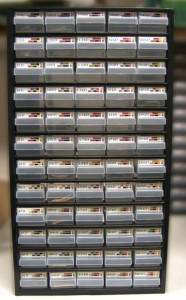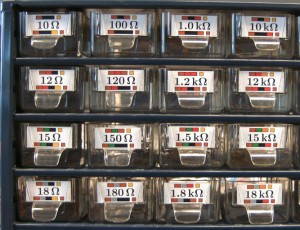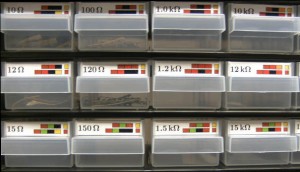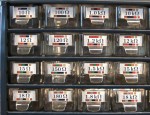…at least if you don’t know which resistors you have in stock and where they are. For a long time we kept resistors in their original cardboard boxes In our student labs – futily trying at least to sort the boxes according to decades of reistance values.

Looking at a standard assortment cabinet we had in another lab I noticed that it had 12 rows of 5 drawers each – ideally for the E12 series of resistors between 10Ω and 820kΩ.


Labelling the drawers and sorting the reistors was quickly done, but the problem arose that after a while the resistors would end up in the wrong drawers. So I decided to make more fancy lables which also show the color code for both carbon-film and metal-film resistors. We now also had different cabinets which required different label sizes. But since I had programmed the labels in LaTeX it was not difficult to adapt those.
Today I decided to share the design of labels with you:
You can also have a look at the resistors_e12_37x17 in case you want to make labels with a different size.
And another practical thing – not only for color-code beginners: A business-card sized color code table with explanations for 4-, 5- and 6-ring resistors. On the backside I placed the standard values of the E12-, E24 and E48-series showing their overlap.



Thanks Alexander for pointing out how to include .tex files in WordPress!